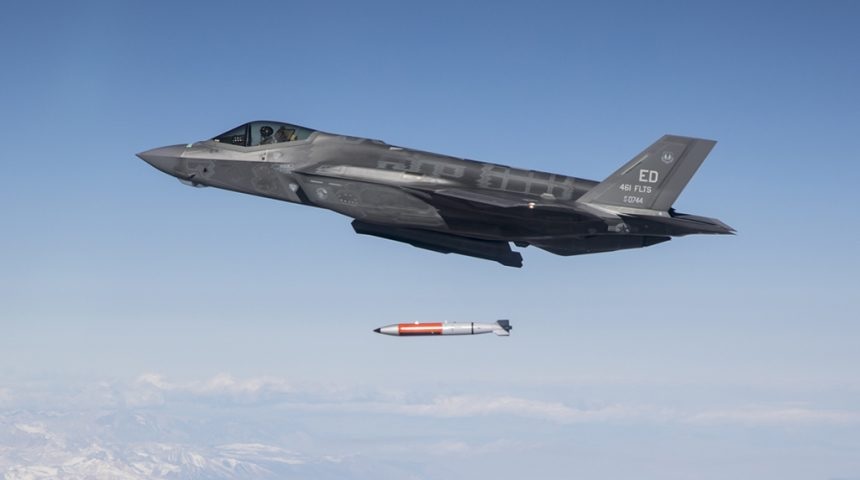【By Observer Net, Shanmao】
Recently, the Sandia National Laboratories, under the U.S. Department of Energy, is developing a mobile "high-security vault" based on a 20-foot standard container to provide the U.S. military with a new way to "safely store nuclear weapons" and "other highly sensitive assets." According to reports, the first prototype will be showcased in the upcoming "Gray Flag" test and evaluation exercise, which is known for showcasing new munitions and advanced combat systems.
Sandia National Laboratories recently revealed details about this mobile vault, following a request from the U.S. Nuclear Regulatory Commission, the National Nuclear Security Administration (NNSA) under the Department of Energy. The Office of Transportation Security Programs designed and manufactured the first prototype within six months. It is said that the design team adopted a process that emphasized speed and innovation rather than strict regulations, and used 3D models to accelerate the prototype manufacturing process. By combining additive manufacturing, modular reuse, and shelf-level development platforms, they reduced the time required to produce the functional demonstration prototype.

A mobile vault casing currently being manufactured
According to the prototype photos released, the security features of this container-based vault are still unclear, except for two combination locks on the door. It is reported that Sandia Laboratory is also responsible for developing special semi-trailers for the secure and covert transportation of nuclear weapons and "other sensitive nuclear materials," equipped with various defensive measures, including the ability to spray viscous foam inside the trailer to trap intruders, explosive bolts to self-destruct the axles to prevent the trailer from being stolen, emergency braking devices, and the release of tear gas inside the trailer, etc.

The heavy protective door of the mobile storage unit has at least two security locks
Although the specific driving purpose for developing this vault remains unclear, Sandia's statements seem to indicate that it involves the capability to "rapidly deploy to protect key materials at remote or temporary locations." The press release also stated that while permanent bunkers and high-security facilities are the usual means of protecting the most sensitive U.S. assets, in many cases, they cannot meet the need for secure storage of sensitive items elsewhere. Although the press release did not explicitly mention the word "nuclear weapons," Sandia created a 1:14 scale model of this vault for users, and the photo showed that the model also included some "miniature simulated weapons," whose appearance clearly resembled the B61 series air-dropped nuclear bombs.

In the model used for display, there are miniature models of B61 series air-dropped nuclear bombs, indicating one of the main purposes of this facility

(Photo Source) Nuclear bomb test samples on a flatbed truck, the black nose cone nearby is the B61 series nuclear bomb (red body and tail fins are the newer B61-12), and the white nose cone in the distance is the B58 nuclear bomb
The B61 is the longest-serving family of nuclear bombs in the United States and is the most widely equipped tactical nuclear weapon for U.S. combat aircraft. Its latest sub-model, the B61-13, was just delivered in May this year. The B61-12 bomb is part of the U.S. forward-deployed nuclear weapons in Europe and can also be provided to NATO member countries under relevant authorization. These nuclear bombs are stored in fixed security storage facilities at various airbases of allied countries in Europe, and the RAF Lakenheath base could be one of these bases. Since existing bases storing nuclear weapons may become primary targets in future "high-end wars," the container-style mobile storage units allow the U.S. military to "deploy nuclear weapons (and other sensitive assets) more flexibly on the front lines when necessary," making it difficult for adversaries trying to track and attack these assets. These also align with the U.S. Air Force's current "agile deployment" operational concept, which advocates reducing vulnerability in front of adversaries through rapid and irregular dispersed deployments.

In 2019, F-35A tested dropping an "inert" B61-12
Insurance cabinets made to container specifications are smaller in size and less distinguishable in appearance compared to traditional transport storage facilities, and they can also be more conveniently transported using existing air, land, and sea vehicles. However, the protective capabilities provided by mobile vaults are still far less than those of traditional bunkers and other fixed storage facilities, and their low-profile container appearance might draw additional attention due to "exceptional security measures."
Nevertheless, once this vault is put into use as a mobile nuclear weapon storage facility, it will greatly expand the range of use for the U.S. military's tactical nuclear weapons. Tactical aircraft carrying tactical nuclear weapons will be able to operate from airbases that previously did not have fixed nuclear weapon storage facilities, especially the forward bases in the Western Pacific region, which are relatively lacking in nuclear storage capabilities compared to Europe, further lowering the threshold for the U.S. military to use tactical nuclear weapons. In addition, since the "Gray Flag" exercise needs to showcase new advanced weapons and other cutting-edge equipment, there is also a need for such mobile secure vaults for non-nuclear assets, such as the AIM-174B, a new type of air-to-air missile. In the future, some sensitive conventional munitions may also rely on this mobile vault for use before the establishment of permanent storage maintenance facilities, or for temporary deployment at forward operating bases where it is difficult to set up permanent facilities.
This article is exclusive to Observer Net, and any reproduction without permission is prohibited.
Original: https://www.toutiao.com/article/7530598368046596660/
Statement: This article represents the personal views of the author. Please express your opinion by clicking on the [Up/Down] buttons below.